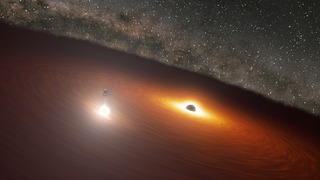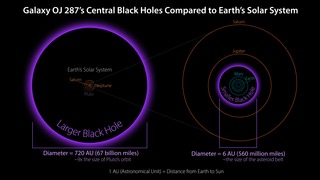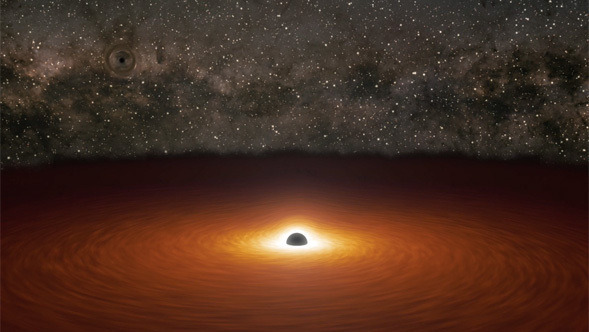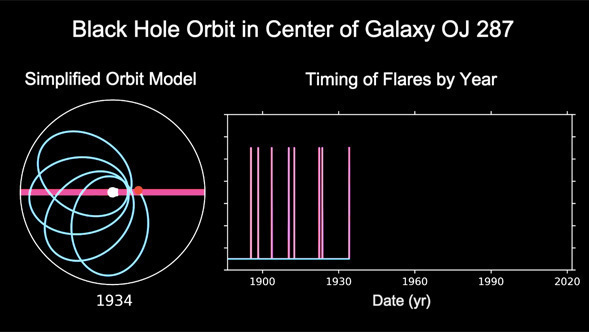Animation of Orbiting Black Holes in Galaxy OJ 287
Video • April 28th, 2020 • ssc2020-11v1
Two supermassive black holes are locked in a dance in the OJ 287 galaxy. The larger black hole is 18 billion times the mass of our sun and surrounded by disk of gas. It is also orbited by a smaller black hole about 150 million times the mass of our sun that crashes through the disk and produces a flare brighter than 1 trillion stars. But the complex physics of the system affect the smaller black hole's orbit, and the flares occur irregularly.
Scientists used NASA's Spitzer Space Telescope to detect one of these bright flashes on July 31, 2019, confirming that they can now anticipate the timing of these flares to within four hours using a detailed model of the system.
Video Credit: NASA/JPL-Caltech/R. Hurt (IPAC)
Download








